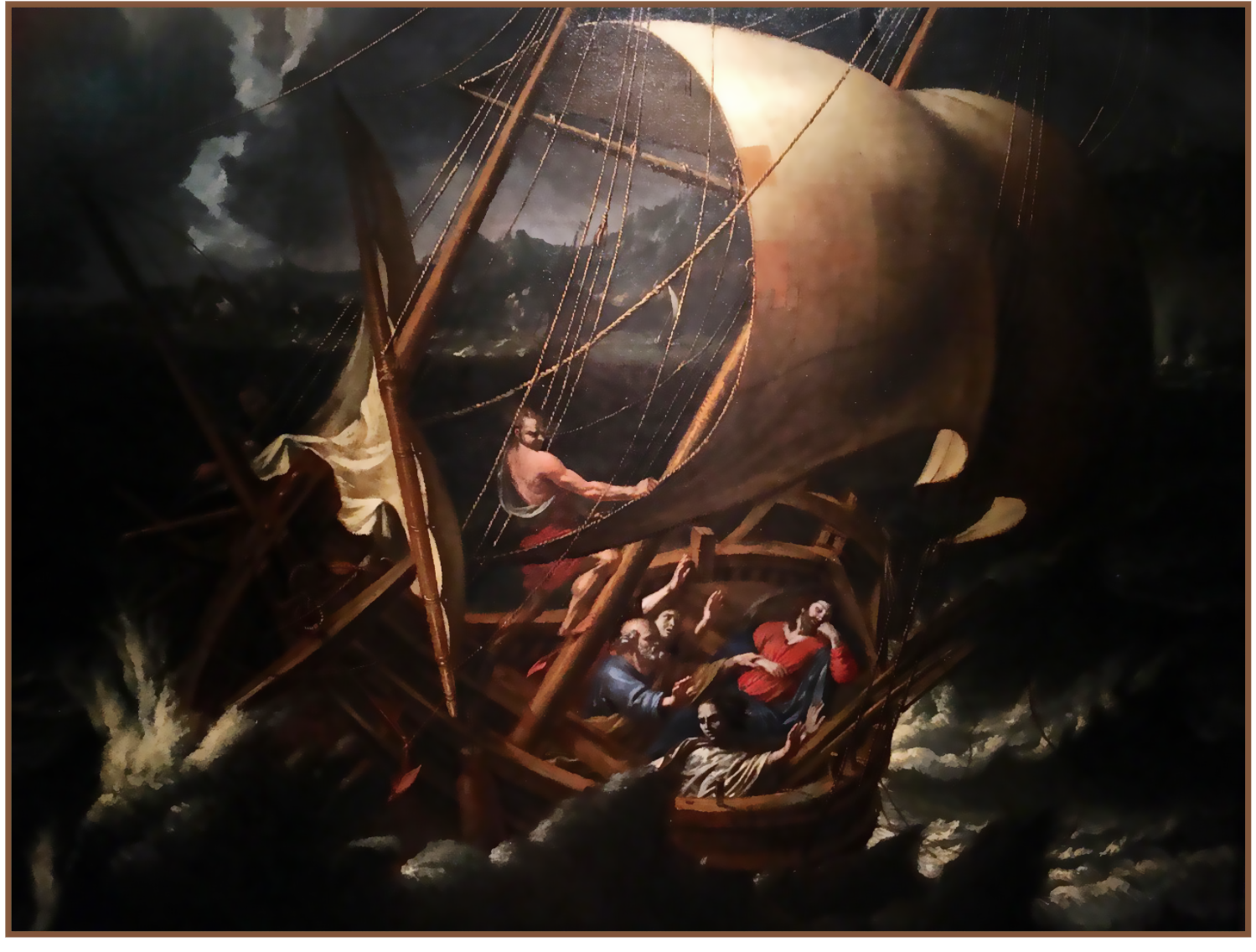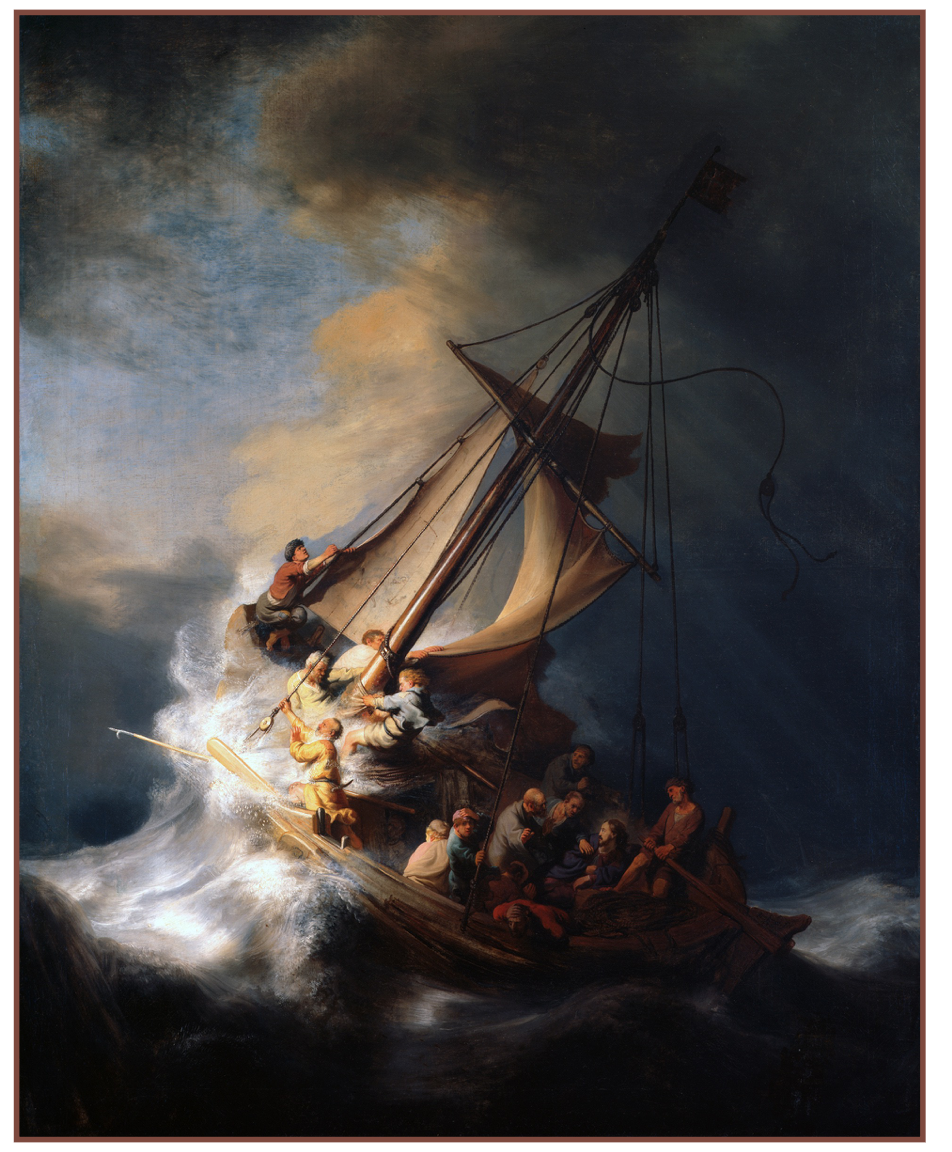Object of the Month: November 2017
Christ on the Sea of Galilee
Oil on canvas
Unknown French
Click on links for additional reference information.
This dynamic seascape by a seventeenth-century French painter bears a striking similarity to a work done by a renowned Dutch master of the same period, Rembrandt van Rijn. Until the modern concepts of copyright and intellectual property, most artists of the past eagerly learned from the creative ideas and innovative troubleshooting of both those before them and their contemporaries. Part of an artist’s training involved painting copies of famous works of art or that of their master (the teacher they were apprenticed to or worked under). The diagonal composition, dramatic lighting, textures, and even to some degree, the figures in this M&G work are clearly reminiscent of Rembrandt’s Storm on the Sea of Galilee (below).
Rembrandt van Rijn (1606-1669) was born in the Netherlands, “a land of winds and water.” Located on the North Sea, twenty-five percent of the land is at or below sea level with the highest point (Vaalserberg) only 1053 feet above. Over the centuries, this geography has shaped both the nation’s history and the temperament of its people. For example, during the seventeenth century raging sea storms and lowland flooding often threatened life and livelihood, but Dutch ingenuity and resilience turned these formidable obstacles into valuable resources. (For more detailed exploration download the National Gallery of Art’s informative resource Painting in the Dutch Golden Age.)
In light of Rembrandt’s birthplace, it’s interesting that he painted only one seascape. Regardless, the dynamic composition and nuanced atmospheric beauty of his Storm on the Sea of Galilee reflects an intimate knowledge of storm-tossed seas. Rembrandt was only 27 when he painted this work, and art historians have speculated that the choice of subject indicates a youthful preference for action-packed scenes. Whatever his motivation, the scene clearly adumbrates the dramatic chiaroscuro and nuanced visual texture that would become a hallmark of his work.
Sadly, we are limited to experiencing the work through reproductions. On the night of March 18, 1990, two thieves dressed as police officers entered the Isabella Stewart Gardner Museum in Boston, bound the museum’s security guards, and made off with thirteen of the gallery’s prized masterworks, including Rembrandt’s famous seascape.
Artists today are still honing their skills by studying and copying such masterworks. As contemporary artist Lisa Marder acknowledges, it is “one of the tried and true techniques of classical art training.”
Donnalynn Hess, Director of Education
Published in 2017

